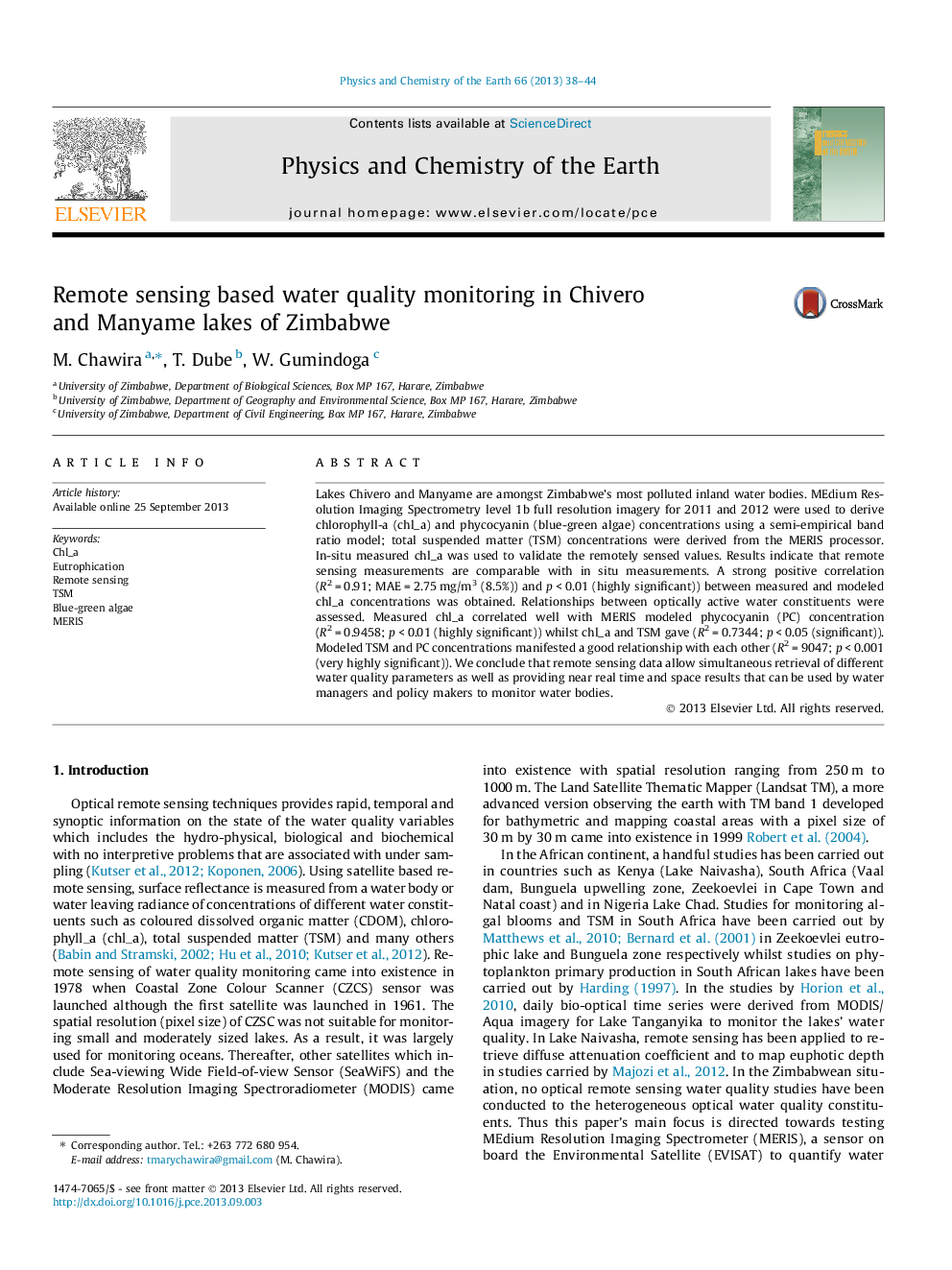| Article ID | Journal | Published Year | Pages | File Type |
|---|---|---|---|---|
| 4721023 | Physics and Chemistry of the Earth, Parts A/B/C | 2013 | 7 Pages |
•Semi-empirical band ratio model used to derive water quality parameters.•In situ chl_a measurements from Lake Chivero validated MERIS derived variables.•Remote sensing valuable in providing realtime/spatial coverage of water quality variables.•This allows frequent monitoring of water bodies of Lakes Chivero and Manyame.
Lakes Chivero and Manyame are amongst Zimbabwe’s most polluted inland water bodies. MEdium Resolution Imaging Spectrometry level 1b full resolution imagery for 2011 and 2012 were used to derive chlorophyll-a (chl_a) and phycocyanin (blue-green algae) concentrations using a semi-empirical band ratio model; total suspended matter (TSM) concentrations were derived from the MERIS processor. In-situ measured chl_a was used to validate the remotely sensed values. Results indicate that remote sensing measurements are comparable with in situ measurements. A strong positive correlation (R2 = 0.91; MAE = 2.75 mg/m3 (8.5%)) and p < 0.01 (highly significant)) between measured and modeled chl_a concentrations was obtained. Relationships between optically active water constituents were assessed. Measured chl_a correlated well with MERIS modeled phycocyanin (PC) concentration (R2 = 0.9458; p < 0.01 (highly significant)) whilst chl_a and TSM gave (R2 = 0.7344; p < 0.05 (significant)). Modeled TSM and PC concentrations manifested a good relationship with each other (R2 = 9047; p < 0.001 (very highly significant)). We conclude that remote sensing data allow simultaneous retrieval of different water quality parameters as well as providing near real time and space results that can be used by water managers and policy makers to monitor water bodies.
